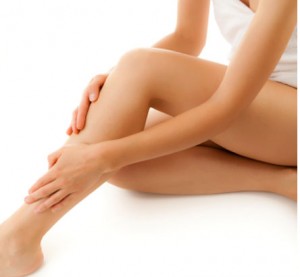By John P. Landi, MD, FACS, RPVI, RPhS, Diplomate of The American Board of Phlebology –


Despite the fact that the current treatment of Varicose and Spider Veins has been available for at least the last eight years, there are still many myths associated with Varicose and Spider Veins. These myths and truths will be addressed in the following paragraphs:
Myth #1
Varicose Veins are a hereditary problem.
This is not a Myth. This is True. The single most common cause of varicose veins is hereditary. It is not unusual for varicose veins to run in family lines and not uncommon for a grandmother, mom and daughter to all have significant varicose veins. In fact, in women, varicose veins are something for which a woman can blame both her mom and her children.
Myth #2
Varicose Veins are due to pregnancies.
This is not a Myth. Pregnancies do lead to varicose veins for the following reason – during pregnancies the pressure of the baby pressing on the pelvic veins causes dilation of the veins which in turn leads to stretching of the valves.
Ultimately, the valves, over the course of time, lose the ability to close properly and this could result in varicose veins. The essential element in the cause of varicose veins is what is called Valvular Insufficiency. Blood normally flows from the feet up the legs through a series of valves which close as the muscles contract. When these valves become weakened and over- stretched the blood cannot go through them normally and basically goes around the valves through the skin to form the varicosities and spider veins.
Myth #3
Support Stockings will make Varicose Veins go away.
This is not True. Support stockings will symptomatically help to compress varicose veins and spider veins and try to do the work of valves that have failed. However, support stockings are only a temporary measure. If the underlying problem is Valvular Insufficiency, once the support stockings are removed, the primary cause of varicose veins continues. Although, support stockings may give symptomatic relief they do not resolve the problem.
Myth #4
Clots in the legs can go to the lungs.
This is True. Clots can form in the veins of the leg which can break off and enter the lung causing a Pulmonary Embolism. There are three levels of veins in the legs. There is a Superficial System, Connecting System and a Deep System. Clots that form in the Deep System can lead to Deep Venous Thrombphlebitis which can ultimately form a Pulmonary Embolism which could be a life threatening problem. Superficial Phlebitis on the other hand is a form of Clot Formation only in the Superficial Veins. These do not break off and go to the lungs. It is not life threatening and is treated locally with Compression, Warm Compresses and Anti-Inflammatory Medication.
Myth #5
Surgery is necessary for Varicose Veins.
This is definitely a Myth. Up until eight years ago surgery was the only solution for Varicose Veins. This form of treatment has been replaced by valve closure procedures using either LASER or Radiofrequency.
Myth #6
Varicose Veins will always recur.
This is not true. In general, if varicose veins recur usually it is due to a new malfunctioning valve, whereas, some spider veins recurring will happen during the course of a patient’s lifetime and these usually could be treated by sclerotherapy.
Myth #7
Insurance doesn’t cover vein treatment. Again, this is a yes and no answer.
If veins are broken down into varicose veins and spider veins, varicose veins are usually covered by Insurance Companies provided that the patient has valvular insufficiency and reflux. If this is the case and the patient is symptomatic from the reflux and has usually had a trial of support stockings that has failed, then that patient is eligible for treatment of the varicose veins usually with a Laser or Radio Frequency Procedure. Most Insurance Companies will cover this. As far as spider veins, many Insurance Companies consider this to be strictly cosmetic
Myth #8
Only Women have Varicose Vein Problems.
This is an absolute fallacy. Although the majority of patients with vein issues are women, many men have varicose vein and venous insufficiency issues. In fact, over the last eight years in which I have been doing vein therapy, my proportion of male patients has gone from approximately five percent to around thirty percent.
Myth #9
Varicose and Spider Vein Treatment is Strictly Cosmetic.
This is an absolute fallacy. Varicose veins and often times spider veins are due to valvular insufficiency as demonstrated by ultrasound duplex scanning. There are many symptoms including pain, swelling, aching, cramping, itching, burning, and restless legs. If this is the case then the resulting symptoms of varicose and spider veins are not cosmetic and are actually due to a valvular defect. Once this is documented, at least with varicose veins, Insurance Companies frequently will cover the treatment.
La Bella Mia Medical Spa
239-403-0800 | vanishvein.com
20 10th Street North, Naples, FL 34102
 Southwest Florida's Health and Wellness Magazine Health and Wellness Articles
Southwest Florida's Health and Wellness Magazine Health and Wellness Articles
